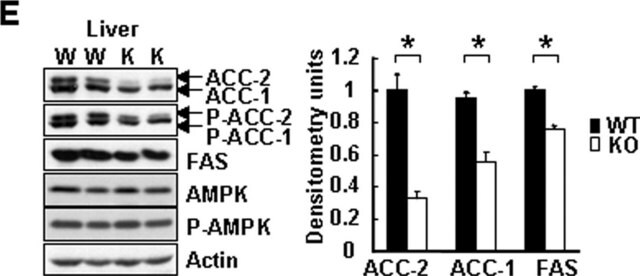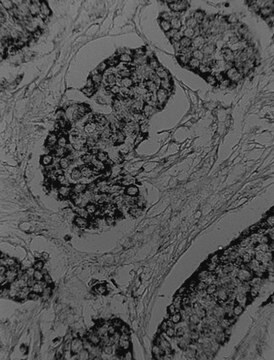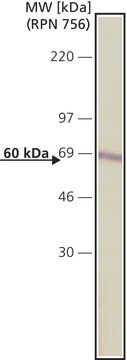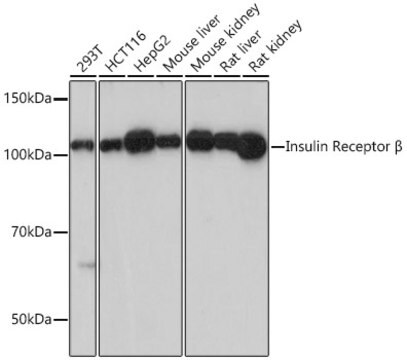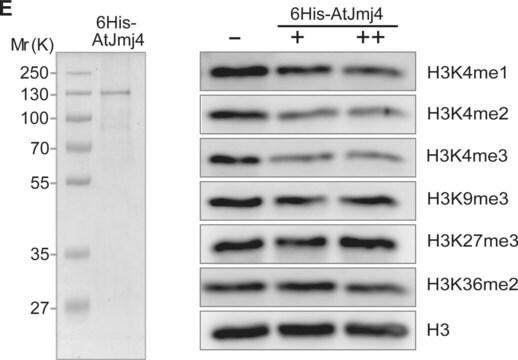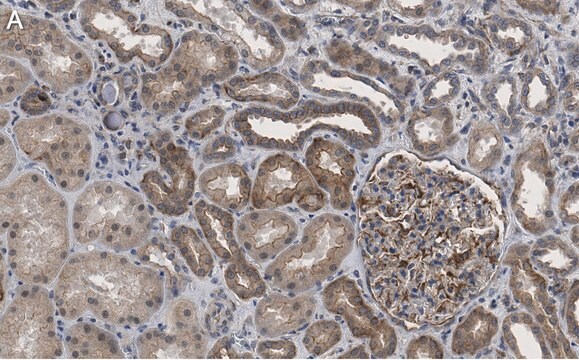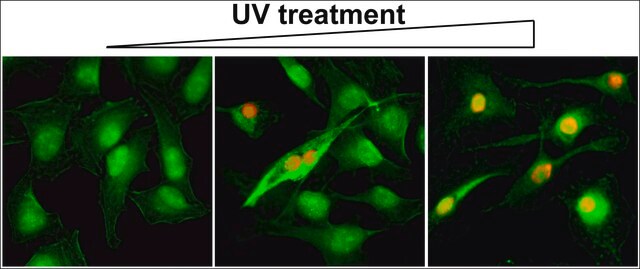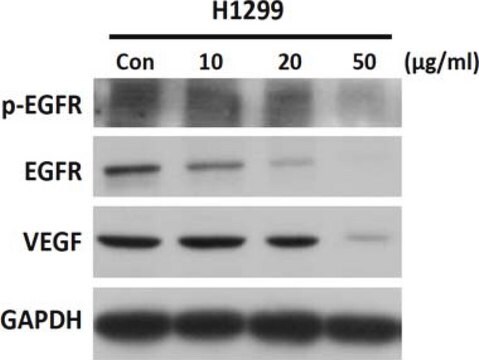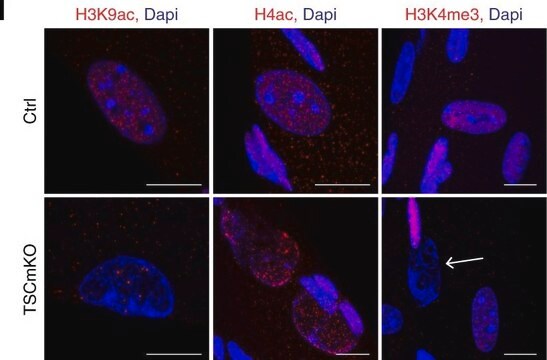07-724
Anti-α-Insulin Receptor Antibody, β subunit
Upstate®, from rabbit
Sinônimo(s):
CD220 antigen, insulin receptor
About This Item
WB
western blot: suitable
Produtos recomendados
fonte biológica
rabbit
Nível de qualidade
forma do anticorpo
affinity isolated antibody
tipo de produto de anticorpo
primary antibodies
clone
polyclonal
purificado por
affinity chromatography
reatividade de espécies
mouse, human, rat
reatividade da espécie (prevista por homologia)
chimpanzee
fabricante/nome comercial
Upstate®
técnica(s)
immunoprecipitation (IP): suitable
western blot: suitable
nº de adesão NCBI
nº de adesão UniProt
Condições de expedição
wet ice
modificação pós-traducional do alvo
unmodified
Informações sobre genes
human ... INSR(3643)
Descrição geral
Especificidade
Imunogênio
Aplicação
Signaling
Metabolism
Insulin/Energy Signaling
Qualidade
Western Blot Analysis: : 1:1,000 dilution of this antibody detected α-Insulin Receptor, β subunit in human brain tissue lysate.
Descrição-alvo
forma física
Armazenamento e estabilidade
Nota de análise
Human brain tissue lysate
Outras notas
Informações legais
Exoneração de responsabilidade
Não está encontrando o produto certo?
Experimente o nosso Ferramenta de seleção de produtos.
recomendado
Código de classe de armazenamento
10 - Combustible liquids
Classe de risco de água (WGK)
WGK 1
Certificados de análise (COA)
Busque Certificados de análise (COA) digitando o Número do Lote do produto. Os números de lote e remessa podem ser encontrados no rótulo de um produto após a palavra “Lot” ou “Batch”.
Já possui este produto?
Encontre a documentação dos produtos que você adquiriu recentemente na biblioteca de documentos.
Nossa equipe de cientistas tem experiência em todas as áreas de pesquisa, incluindo Life Sciences, ciência de materiais, síntese química, cromatografia, química analítica e muitas outras.
Entre em contato com a assistência técnica